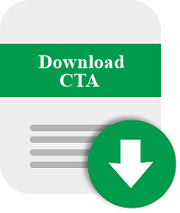The Inception
Consider the following conditions before accepting or declining an invitation to review:
- Corresponding to the area of expertise: Accept only if you believe the reviewer is capable of providing a high-quality review. If the reviewer is unable to complete the review, he or she should refer it to another reviewer who possesses the necessary capacity, capability, and expertise.
- A potential conflict of interest is discovered: the reviewer is expected to inform the editor.
- Availability of time: reviewing the process can be time consuming. As a result, before accepting an offer, ensure that the review process will meet the deadline.
The reviewers are expected to respond as soon as possible to the invitation (even if it is to decline). A delay in their decision can sluggish the review process and add to the author's wait time. If they decline the invitation, it would be beneficial if they could make alternative reviewer recommendations.
Supervising the Review
Confidential information
The invitation to review that is accepted must treat the materials received as confidential. This means that reviewers cannot share them with anyone without the editor's permission. Because peer review is confidential, they must also refrain from disclosing information about the review to anyone without the editors' and authors' permission. The review process is double-blind, which means that the author's name and affiliation will be withheld to protect author confidentiality and avoid potential conflicts of interest.
How to access your review and log in
- The review process will be managed through IJIEF's online journal system. To access the paper and submit your review, click on the link in the invitation email you received to access the submission/reviewing system.
- You must log in as a reviewer using the username and password provided by IJIEF management; if you do not have them, please contact the editorial assistant.
- Select articles sent by clicking "1 active". Number 1 indicates the number of articles handled. Then, please choose the article's title.
- Please take the time to read the article. Consider spot-checking significant issues by selecting which section to read first. We've included some pointers below on how to handle specific sections of the paper.
- The title should be succinct (no more than 12 words), but it should accurately represent the content of the paper.
- Abstracts include a background section, an objective section, a method section, a primary result section, and an implication section. (Maximum of 200 words). Including JEL Classification, Keywords, and the type of paper being written, which is a research paper. Paper/Review of Literature/Systematic Review/Overall View.
- Introduction: Clarity of the problem and its context, as well as the significance and relevance of the themes.
- Literature Review: Theoretical Ground and Relationship to Literature
- Methodology: The reason of Method used and the source, clarity and update of Data
- Results and Analysis: The presentation of Results and the cohesiveness of Analysis
- Conclusion and Recommendation: The alignment of problem statement to the Conclusion, and the relevant Recommendation
- References: The article referred in the body of the paper should match those in the references
- Contribution for Academic, Regulator, and Practitioner.
- Adhere to the review instructions, which consist of five steps:
- Reply to the Editor's Response to the article submission, select Will do the Review if you are willing to review, then send the email
- Download the article
- Give a review of the article on the review form which has been attached along with the manuscript, or you can download here.
- Upload Documents that have been commented on
- The reviewer may submit the following recommendations via the website system of the International Journal of Islamic Economics and Finance (IJIEF):
- Accept submission: If the manuscript under review is acceptable as-is, the reviewer selects this option.
- Revisions required: a reviewer selects this option if the manuscript is accepted with necessary corrections made by the author.
- Resubmit for review: If the manuscript requires significant revisions, the reviewer may choose this option. Thus, a second review is necessary after the author has made the necessary changes.
- Resubmit elsewhere: If the manuscript under review does not fit the journal's scope, vision, or mission, the reviewer may choose this option.
- Rejected: If a manuscript is rejected, a reviewer may choose to decline the submission.
- See comments: If a reviewer is unable to decide on a manuscript under review, he or she may submit it to an editor or editorial board in another country to view and read the reviewer's comments and seek advice.
- When you have completed the review process, please send an email.
Review Structure
Your review will assist the editor in determining whether to publish the article or not. Additionally, it will benefit the author and enable them to improve their manuscript. It is critical to express your overall opinion and observations about the article. Your comments should be polite and constructive, and should not contain any ad hominem attacks or personal information about you, such as your name.
It is critical to provide insight into any shortcomings. You should justify and support your judgment so that both editors and authors understand your comments completely. You should indicate whether your comments are based on your personal opinion or on data and evidence.
Following your Review
After submitting your review, you may wish to contact the Editorial Assistant to ensure that you are properly credited for your efforts. As a token of appreciation for your willingness to review, management provides a token of appreciation. As a token of appreciation, create a certificate for the reviewer and send it to the reviewer's email.
Remember that even after you've completed your review, you must treat the article and any associated files or data as if they were confidential documents. This means that you may not share them or information about the review with anyone without the editor's express permission.
Finally, we would like to express our heartfelt appreciation on behalf of the journal, editors, and author(s) for the time you took to provide valuable input to the article.












1.jpg)